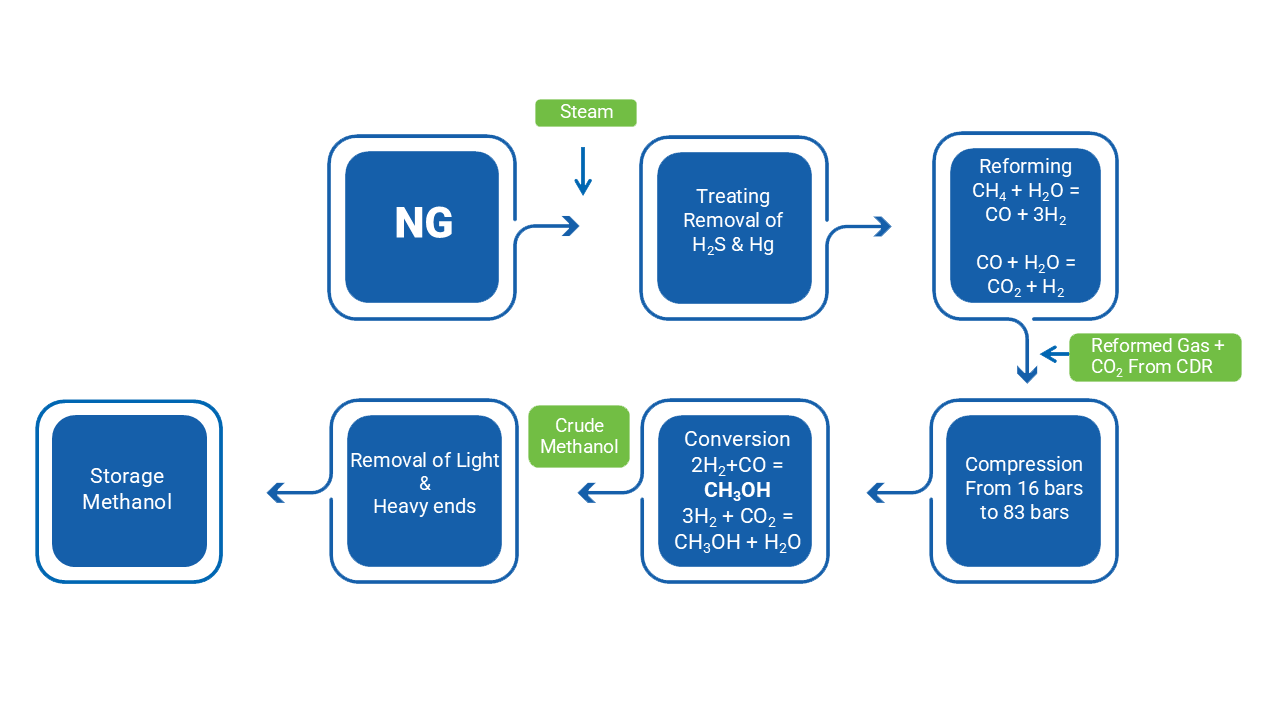A Glance at QAFAC’s Products
QAFAC’s long-term operational momentum propelled the corporation to shape its plants to produce 2,950 MTPD of Methanol and 1,830 MTPD of MTBE(Methyl Tertiary-Butyl Ether) on a daily scale.
What is Methanol
Methanol (CH3OH) is an eco-friendly chemical compound that has an imperative and sustainable role in today’s petrochemical industry. As an efficient chemical additive, it belongs to Alcohol family that is flammable fire in a blink of an eye, and highly toxic. Relatively, Methyl Alcohol, Wood Spirit, Wood Alcohol and Carbinol are the other chemical names of Methanol. Furthermore, this chemical substance is a clean source of energy that outlines the future of decarbonization, causing less perilous gas emissions that intimidate nature and health. Reflecting on history, Methanol was primarily produced by wood distillation with the emergence of the early 1900’s. However, it had been produced from coal as of the beginning of 1920’s. Tracking forward to 1960’s, the petrochemical industry has had a phenomenal transformation in the production of Methanol from primitive resources like wood and coal to more effective resources like Petroleum, Naphtha and natural gas
Methanol is a clear, colorless and combustible liquid with a characteristic odor. It serves as a clean source of energy and efficient petrochemical additive that beats all other high-risk alternatives. Furthermore, Methanol has a well-observed and proven impact in mitigating Greenhouse Gas emissions that distort the major elements of sustainability and biodiversity

What is Methanol
Methanol (CH3OH) is an eco-friendly chemical compound that has an imperative and sustainable role in today’s petrochemical industry. As an efficient chemical additive, it belongs to Alcohol family that is flammable fire in a blink of an eye, and highly toxic. Relatively, Methyl Alcohol, Wood Spirit, Wood Alcohol and Carbinol are the other chemical names of Methanol. Furthermore, this chemical substance is a clean source of energy that outlines the future of decarbonization, causing less perilous gas emissions that intimidate nature and health. Reflecting on history, Methanol was primarily produced by wood distillation with the emergence of the early 1900’s. However, it had been produced from coal as of the beginning of 1920’s. Tracking forward to 1960’s, the petrochemical industry has had a phenomenal transformation in the production of Methanol from primitive resources like wood and coal to more effective resources like Petroleum, Naphtha and natural gas
Methanol is a clear, colorless and combustible liquid with a characteristic odor. It serves as a clean source of energy and efficient petrochemical additive that beats all other high-risk alternatives. Furthermore, Methanol has a well-observed and proven impact in mitigating Greenhouse Gas emissions that distort the major elements of sustainability and biodiversity

How to produce Methanol

Reforming Section
In this manufacturing section, the Natural Gas is processed to remove catalyst poisons like Sulfur, then it is routed to the reformer. In the reforming stage, NG is converted to reformed gas consisting of H2, CO, and CO2 in the Steam Methane Reformer. H2, CO, and CO2 are the raw materials to manufacture Methanol. In addition, QAFAC captures 500 MTPD of CO2 from reformer flue gas in the Carbon Dioxide Recovery (CDR) unit to help reduce its effect on health and environment
The Synthesis Section
In this stage, the reformed gas is merged with CO2 from Carbon Dioxide Recovery plant and compressed to meet the required pressure for Methanol Synthesis in synthesis converter
Distillation section
In the distillation section, Methanol is refined to 99.85% purity. After confirming proper quality, a specific quantity is pumped into MTBE plant as a raw material to produce MTBE while shipping the remaining quantity to the customers
Reforming Section
In this manufacturing section, the Natural Gas is processed to remove catalyst poisons like Sulfur, then it is routed to the reformer. In the reforming stage, NG is converted to reformed gas consisting of H2, CO, and CO2 in the Steam Methane Reformer. H2, CO, and CO2 are the raw materials to manufacture Methanol. In addition, QAFAC captures 500 MTPD of CO2 from reformer flue gas in the Carbon Dioxide Recovery (CDR) unit to help reduce its effect on health and environment
The Synthesis Section
In this stage, the reformed gas is merged with CO2 from Carbon Dioxide Recovery plant and compressed to meet the required pressure for Methanol Synthesis in synthesis converter
Distillation section
In the distillation section, Methanol is refined to 99.85% purity. After confirming proper quality, a specific quantity is pumped into MTBE plant as a raw material to produce MTBE while shipping the remaining quantity to the customers
Methanol Applications

A raw material
MTBE Production

Automotive Manufacturing
Paints,Tire Core Adhesives,Polyurethane Dashboard Foam

Production of
Hydrocarbons, olefins, gasoline

Fuels
Marine fuels,MTBE

Medical equipment
Gloves,Medical Gown,Masks

Daily life usage
Polyurethane Mattress Foam,PET Plastic Bottles,Decorative laminates

A raw material
MTBE Production

Medical equipment
Gloves,Medical Gown,Masks

Production of
Hydrocarbons,Olefins,Gasoline

Automative Manufacturing
Paints,Tire Core Adhesives,Polyurethane Dashboard Foam

Fuels
Marine fuels,MTBE

Daily life usage
Polyurethane Mattress Foam,PET Plastic Bottles,Decorative laminates

